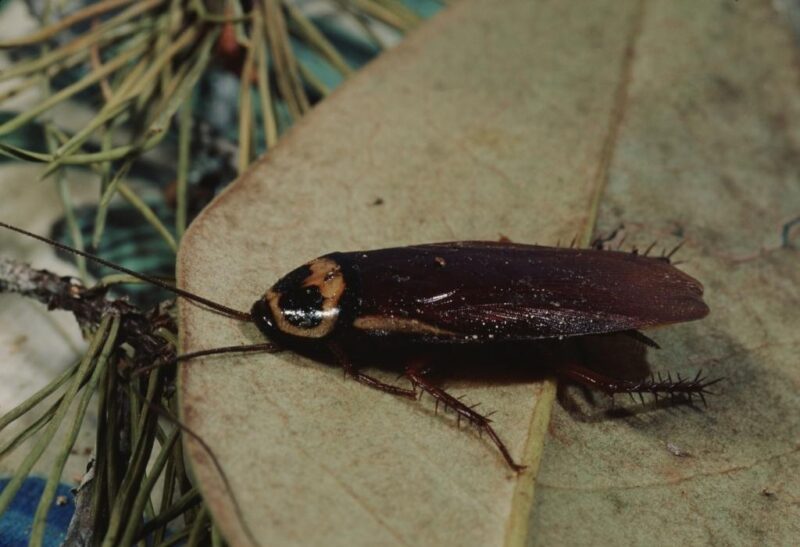American roaches are small, dark insects that can be found in nearly any home. They’re most common in the Southern US and are often found near water sources, such as sewers or drains. American roaches are a health hazard. They are known for their ability to carry and spread diseases such as salmonella and tuberculosis.
Surprisingly, American roaches are not native to the United States. They were brought over by early settlers, but they have adapted to their new environment and now live in most urban areas.
In this article, we are going to talk more about this kind of roach, how to properly deal with them, and other helpful information to prevent them from causing harm to you, your family, and your property.
Table of Contents
American Roach Identification
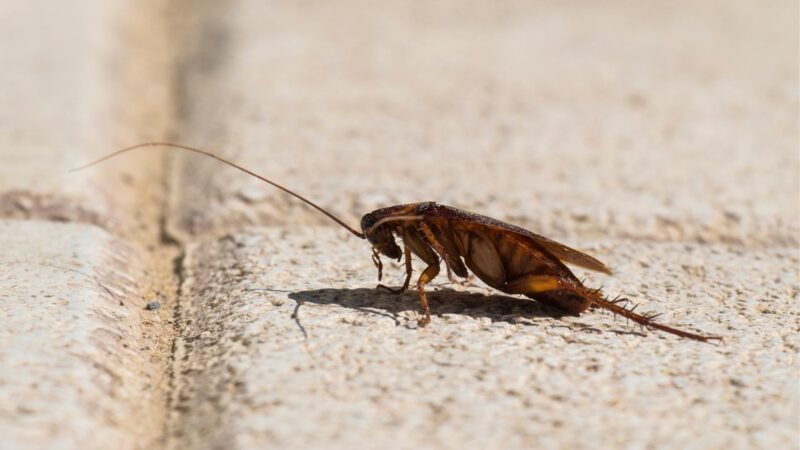
Scientific Name
Periplaneta americana (L.) is the scientific name for American roaches.
Appearance
Adults measure around 4 cm long, are reddish brown and have wings that extend the entire length of the abdomen. Male and females have complete wing development. While those of the female are around the same length as the abdomen, those of the male extend slightly past the tip of the abdomen.
Nymphs have a similar look to adults. However, they are smaller and lack wings. Despite having the ability to fly, American cockroaches rarely do so in the Northern parts of the country. Their wings are large, with a rounded wing tip. The legs are short and stout, with tarsal claws that are slightly curved.
American roaches have three pairs of legs. The front legs have three segments each: a small prehensile claw at the end of each segment; a long middle claw; and a large hind claw. On the other hand, their back legs have five segments: two large hind claws and three small prehensile claws on the third pair of legs.
The American roach has a long snout that protrudes from its head for use in burrowing through material such as wood or soil, which would otherwise be inaccessible to its smaller eyes. This helps it find food sources that are hidden underground.
Color
American roaches are brown, with a reddish color on their heads and wings. They are covered in short, dark hairs. They have long antennae that they use to smell the air and detect movement.
Lifespan
There are three life phases in the American cockroach: the egg, the number of nymphal larvae, and the adult. The average length of the life cycle from egg to adult is 600 days, and the lifespan of an adult may be another 400 days.
After around six to eight weeks, the nymphs break through the egg case, and they need between six and twelve months to mature. An adult female will typically give birth to 150 children in her lifetime, and adults have a maximum lifespan of one year.
Wingspan
American roaches have wings that are about 1 inch long, with the tips being very sharp. Their antennae are about 4 cm long.
Diet
American roaches are omnivores; they eat both plants and animals. They prefer to feed on dead insects, but will also eat any leftovers from a meal.
Although American cockroaches consume a wide range of foods, they seem to prefer decomposing organic waste. Adults may go two to three months without eating but only approximately a month without drinking.
Characteristics
The American cockroach is highly adaptable, and it can survive for long periods of time without food or water, if necessary, by storing fat reserves under its wings. They tend to be nocturnal creatures; they hide during the day and come out at night to feed.
Additionally, they will travel in small groups or alone but do not swim. Their bodies are covered with short hairs that look like tiny bristles. The body is brown or reddish-brown in color with a light-colored belly. They have six legs with claws at the end of each leg for gripping surfaces when moving around or climbing walls or ceilings.
American roaches can travel up to 3 feet per second using their four legs for propulsion, as well as using their wings for gliding during flight. They are extremely fast runners and can run very quickly over smooth surfaces, like metal grates or floors, without leaving any tracks behind them.
They don’t walk on their back legs like other insects do when moving around on flat surfaces like carpets or floors. This is why you may notice their footprints disappear.
Habitat
The American roach lives in homes and other buildings, as well as outdoors, so it has access to food and water sources. It can be found in damp areas near drains or sewer pipes or under sinks in kitchens.
The American roach is a common pest in many parts of the world, including North America, Asia, and Europe. The American cockroach’s development is influenced by environmental elements like temperature and humidity.
Length
The average length of an adult house roach is about 4 centimeters long, with a wingspan around 2 centimeters wide at the body end.
What Are the Signs of American Roaches?
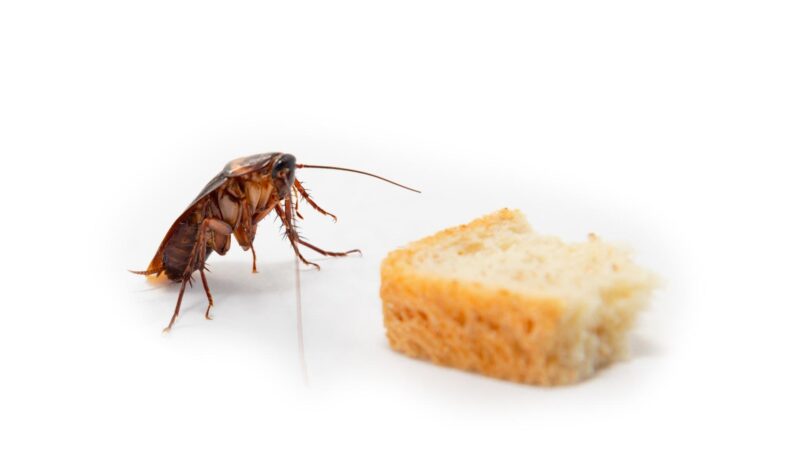
Roaches are known to be the world’s largest insects, but they’re also some of the most difficult pests to get rid of. They can live in many places and are highly resilient to pesticides. If you have an infestation of American roaches, there are a few things that you should look for:
- Dark spots on walls or ceilings from their droppings
- Crawling around at night
- Skinny little legs that run across the floor
- Small dark spots that look like ants in your kitchen (they’re called “black droppings” because they look like soot)
What Damage Do American Roaches Cause?
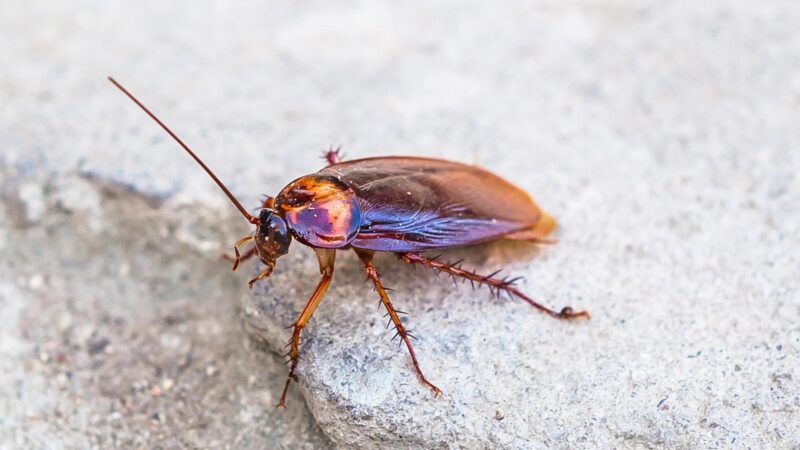
Roaches are known for their ability to hide in food and other items that you store in your home. This means that they are likely to come into contact with people who live in the home and work there.
The American cockroach is known for its ability to spread disease through its feces, which can cause serious infections in humans who come into contact with it. They also carry bacteria that cause tuberculosis, which has been known to cause death if left untreated.
How Do You Prevent American Roaches?
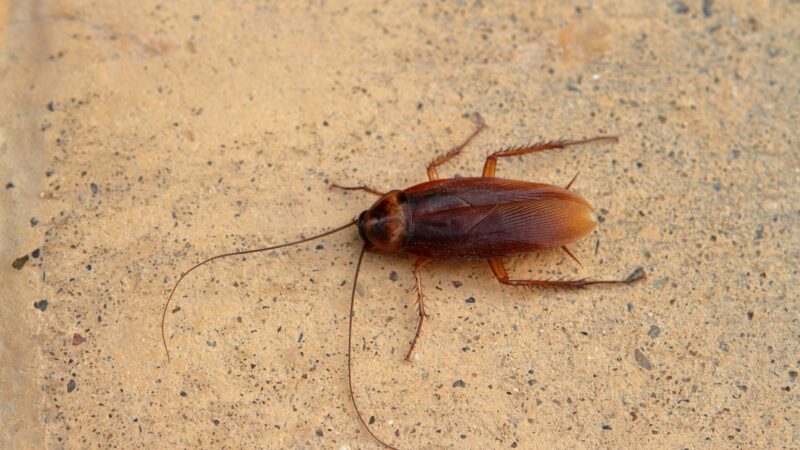
Roaches are a major problem in homes across the country. They can cause damage to your belongings and cause an infection that makes you sick. Luckily, there are plenty of ways to prevent American roaches from invading your home.
- One of the most obvious ways is by keeping your home clean. If you don’t have any pets, you probably have a lot of food that attracts cockroaches. If you do have pets, make sure they aren’t eating food that attracts cockroaches.
- Another way to prevent American roaches is by using ant baits around your home and yard. Ant baits are designed specifically to kill roaches, but they also attract other bugs. It’s important not to use them near food or anything else that could be harmed by them as well (like children or pets).
- If you live in an apartment building or condo unit with many other people, there may not be enough space on each floor for people to store all their stuff properly without causing clutter, which can attract more American roaches into their homes too!
- Another way to prevent American roaches from entering your home is by sealing any cracks or openings around pipes or vents with caulk. This will keep any roaches that try climbing into your home from getting inside.
- You’ll also want to vacuum regularly throughout your house to remove any food scraps or other materials that could attract roaches. This will make it harder for them to find a place to hide when you’re not around!
How Do I Get Rid of American Roaches?
To get rid of American roaches, you’ll want to start by identifying some signs that you can see around your home.
- You can do this by looking for evidence—such as droppings or eggshells—that may indicate that an American roach has been there. If you see these signs, it’s time to act. American roaches can be a problem if you don’t take care of them. They carry diseases like salmonella and toxoplasmosis, which can make you sick if they’re not treated properly.
- You’ll also need to identify their food source—which is typically grains and carbohydrates, such as sugar and flour.
- You’ll also want to seal up the holes in your walls and floors where they’re getting in so that they can’t get back in after treatment is complete.
- Finally, use a professional pest control company that specializes in American roaches to help get rid of them fast!
Frequently Asked Questions
Can American Roaches Hurt Me?
American roaches are not poisonous, but they do carry some diseases that can be spread through their feces or saliva. You should not touch a cockroach with your bare hands unless you want to contract salmonella or ehrlichiosis.
If you do touch one of these insects, wash your hands with soap and water immediately. often. If you get bitten, it shouldn’t be a problem unless it becomes infected, in which case you should consult a doctor.
Do American Roaches Infest Homes?
American roaches can infest homes. The long, curved claws allow them to climb on walls and ceilings, making them able to access food, water, and other areas of your home that are not typically used for food storage or bathing.
They also have larger sizes than German roaches which allows them to penetrate the smaller cracks around windows, under doors, and along baseboards, where they can spread diseases such as salmonella or E-coli.
Are American Cockroaches Bad?
American cockroaches are considered to be a health hazard. They carry some types of bacteria and viruses that can cause major health problems such as anemia, lung infections, gastrointestinal illnesses, and gum disease.
These pests may also spread some types of other damage like allergies, asthma, anemia, and skin infections. American cockroaches may travel through sewers or water pipes, creating the possibility of infecting people with Hepatitis A, salmonellosis, and typhoid.
Are American Roaches Hard to Get Rid Of?
American cockroaches are hard to get rid of because they can live in places that are damp and dark and don’t like to be around strong smells either. Fumigation may work, but then you risk the possibility of coming back again when the treatment wears off. Fortunately, there are some things you can do on your own to combat these pests listed in this article.
Where Do American Cockroaches Nest?
American cockroaches most commonly nest indoors, hiding in areas of your home such as walls and floors. They’ll also move into your kitchen and bathroom, dark garages, dumpsters, crawl spaces, and sewers.
The best ways to control the roaches are by improving sanitation around your property and eliminating their food and water sources. American cockroaches have adapted well to living in our homes and businesses by hiding in small cracks and crevices while they search for food.
Why Am I Seeing Roaches All of a Sudden?
Seeing roaches all of a sudden could be a sign of a bigger problem. If you’re seeing more than one roach around your home, it’s a good idea to make sure that you’ve done everything you can to control the conditions that lead to roaches being in your house in the first place.
How Long Does It Take To Get Rid of American Cockroaches?
If you spot one or two cockroaches, there are probably hundreds or thousands of them dwelling in a nest close by. However, if you take quick action before the colony grows, you might be able to eradicate cockroaches within a week to ten days. In a day or two, the majority of them will be gone.
While many consider them scary, more often than not, it is their unsanitary and undesirable nature that gets under people’s skin. Even worse, cockroaches can be a sign of a far more serious problem like poor housekeeping or excessive trash.
Luckily, getting rid of cockroaches is easy. Do-it-yourself methods are available for the budget conscious. But you will get the best results if you call in an exterminator for an onsite inspection to get a professional opinion based on your current situation and specific location.
List of Sources
Barbara, K. A. (2021). Common name: American cockroach. University of Florida.
Jacobs, S. (2017). American Cockroaches. PennState Extension.
Chapter 4: Disease Vectors and Pests. (2009). Centers for Disease Control and Prevention.
